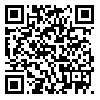Volume 27, Issue 1 (2020)
AIJH 2020, 27(1): 127-152 |
Back to browse issues page
Download citation:
BibTeX | RIS | EndNote | Medlars | ProCite | Reference Manager | RefWorks
Send citation to:



BibTeX | RIS | EndNote | Medlars | ProCite | Reference Manager | RefWorks
Send citation to:
Toobaei T, Talib Zadeh Shushtari A, Abdollahy H, Nazeri H. The Implied reader in The literature for the Shia child .Example: "Selsela Aloswa". AIJH 2020; 27 (1) :127-152
URL: http://aijh.modares.ac.ir/article-31-36168-en.html
URL: http://aijh.modares.ac.ir/article-31-36168-en.html
1- in Ferdowsi Mashhad University
2- Ferdowsi Mashhad University ,shoshtari@um.ac.ir
3- Ferdowsi Mashhad University
4- Ferdowsi University, Mashhad, Iran
2- Ferdowsi Mashhad University ,
3- Ferdowsi Mashhad University
4- Ferdowsi University, Mashhad, Iran
Abstract: (4185 Views)
Over the past several centuries, Children have found their place in the world in terms of their education and learning issues hence, the child has become the subject of interest of researchers and scholars of educational sciences and psychology. Researchers and critics have also been interested in children's literature as domain independent from other literature fields. In early years, we have come across a lot of works related to children and after realizing the necessity of criticism of those works, critics entered the theoretical domain to develop and promote the level of these literary works especially for children. However, the Shia children's literature has not received much scientific attention despite a large number of studies in the field of children’s literature. As such, critical studies are needed in this area to bring the Shia child literature to its desired end. This article, based on descriptive, analytical and critical approaches and with a brief presentation of the Chambers theory, tries to study a model of Shia children's literature in order to elevate its existing standard.
Article Type: مقالات علمی پژوهشی |
Subject:
Arts and Humanities (General)
Received: 2019/10/2 | Accepted: 2020/02/8 | Published: 2020/04/30
Received: 2019/10/2 | Accepted: 2020/02/8 | Published: 2020/04/30
Send email to the article author
| Rights and permissions | |
 |
This work is licensed under a Creative Commons Attribution-NonCommercial 4.0 International License. |







